Books (16)
- KP Singh
.jpg/v1/fill/w_320,h_320/file.jpg)
- May 13, 2021
- 15 min read
Updated: Dec 14
16. SINGH (KP) (2026). The Player: Beyond the Canvas, Breaking Boundaries. Excel India Publishers: New Delhi. P.380. ISBN: . Rs. 4999/

This book chronicles the author's journey as an academic leader, showcasing extensive experience and achievements in various roles, including Professor, President, Provost, Director, Chairman, and Coordinator. It presents a comprehensive account of innovative administrative initiatives, highlighting key milestones, accomplishments, and successes, supported by real-life examples, facts, and figures. This volume offers a unique perspective and experiential content that inspires administrators, academicians, and writers to think creatively. By compiling fragmented information from social media into a cohesive narrative, it sets a new standard for innovative documentation and preservation of valuable experiences, providing a valuable resource for future reference.
15. SINGH (KP) (2025). The Planner: Actions and Refelections: Today & Tomorrow’s Printer and Publishers: New Delhi. P.493. ISBN: 9789348596093. Rs.6996/

Planning, Execution, Management are the basic steps for a Planner to achieve stated goals and objectives. Among the three concepts, Planning is the most catalytic factor which determines success. Planning is the process of setting goals and deciding how to achieve them, while management is the process of putting those plans into action. A person who makes decisions about how something will be done in the future, technically refers to a ‘Planner’. The author as a Planner, in a planned way organised several impactful academic activities executed by him as the Director of Gandhi Bhawan- a vibrant academic center of University of Delhi in promoting, propagating and disseminating the ideology and philosophy of Gandhi. This is co-incidentt that when University of Delhi completed its 100 years of glorious academic and research excellence in 2022, Prof. Yogesh Singh, an internationally acclaimed computer engineer, orator, educationist and an outstanding academic administrator heading the University as Vice-Chancellor. During the DU Centenary Year (1922-2022), DU organised several programs successfully and Gandhi Bhawan was one of the leading centers to organize academic programs during the DU-centenary celebrations. The purpose of writing this book is to prepare a document by capturing the feelings, happenings, emotions, sentiments, decisions expressed by the people on various social media platforms, particularly on Facebook, WhatsApp & X. This book showcases the transformative journey of an ordinary teacher who elevated an ordinary center to extraordinary heights. It serves as a testament to dedication and innovation, motivating others to follow suit. The author envisions this documentation as a lasting legacy and a potential souvenir commemorating the University of Delhi's centenary celebrations, inspiring future generations.

14. SINGH (KP) and AMIT KISHORE (2024). Primer for Social Science Reserach. Neo Era Publication: Bhagalpur, Bihar. P.305. ISBN

प्राइमर फॉर सोशल साइन्स रिसर्च, पीएचडी कोर्सवर्क के छात्रों, पोस्टग्रैजुएट छात्रों, और अध्यापकों के लिए एक व्यापक मार्गदर्शिका के रूप में विकसित की गई है। पुस्तक को 11 अध्यायों और पुनः उसे उप-अध्यायों में विभाजित किया गया है, जिनमें से प्रत्येक, सामाजिक अनुसंधान प्रक्रिया के एक महत्वपूर्ण पहलू को संबोधित करता है साथ ही सूचना प्रौद्योगिकी एवं उसकी सामाजिक अनुसंधान में उपयोगिता पर अध्ययन प्रस्तुत करता है। इन अध्यायों में सामाजिक अनुसंधान में प्रचलित विषयों के साथ ही उभरती प्रवृत्तियों, विषयों और नवाचारों पर विशेष ध्यान दिया गया है, जैसे कि पब्लिकेशन मिसकंडक्ट, प्लेगरिज्म, रेफरेंस मैनेजमेंट सॉफ्टवेयर, स्टैटिसटिकल सॉफ्टवेयर पैकेज, डाटा एनालिसिस टूल्स, सूचना प्रौद्योगिकियों का सामाजिक अनुसंधान पर प्रभाव, आदि। पुस्तक के अंत में वस्तुनिष्ठ बहुविकल्पीय प्रश्नोत्तर (MCQs) प्रदान किए गए है जो कि UGC NET/JRF एवं प्रतियोगी परीक्षाओं की तैयारी करने वाले छात्रों के लिए मूल्यवान साबित होंगी
13. SINGH (KP) (2023). Modi@DU: Colours of Ceremony of Centenary Celebrations.AKS Publishing House: New Delhi. P.248. ISBN: 978-93-91465-31-5.

A moment comes in the history of every institution when it reaches a landmark in terms of its age. Apparently, such an event is solemnized with memorable accomplishments and programmes which have commemorative value and reflect the legacy of the Institution in its various hues and colours in the course of its evolution over the years. The University of Delhi’s centenary celebration was one such occasion, which was commenced from 1st May 2022 & ended on 30th June 2023. The present book is a treatise on the journey of the valedictory ceremony of the centenary celebrations of the University of Delhi and its flying colours of memoirs. It is a composition of the expressions, sentiments, and emotions of teachers, alumni, and well-wishers of the University of Delhi. The content of the book is unique and interesting and will serve as a ‘clearing house’ of all happenings related to centenary celebrations of Delhi University. The authors put their best efforts into consolidating and summarising all sorts of news/information about this historic event and making it an informative and interesting text.

Watch Glimpses of Book Launch Ceremony
Media Coverage: https://www.facebook.com/kp.singh.7967/videos/282099611549985
12. SINGH (KP) (2022). Flying Colours of Inaugural Ceremony of Centenary Celebrations of University of Delhi . AKS Publishing House: New Delhi. P.94. ISBN: 978-93-91465-08-7.

University of Delhi entered into 100 years on 1 st May 2022. The Opening ceremony of the centenary celebrations of Delhi University was graced by the His Excellency Vice-President of India, Shri M. Venkaiah Naidu and Shri Dharmendra Pradhan, Hon’ble Union Minister of Education. This eparchial monograph traces the growth and development of University of Delhi since its inception (1922-2022). Book discussed the major development taken place during the Vice-Chancellors of University of Delhi the first Vice-Chancellor Dr. Hari Singh Gaur to the present Vice-Chancellor Prof. Yogesh Singh. This work is unique in nature and its presentations and worthy to knew about the University of Delhi.
11. SINGH (KP) (2021). 75 Glorious Years, Department of Library and Information Science: Pioneer in LIS Teaching , Research & Innovation. AKS Publishing House: New Delhi. P.228. ISBN: 978-93-91465-04-9

This is the first kind of book which has been written with the sole objective that for a reader everything on the department’s teaching, innovations, landmarks, collaborations, and research affairs can be found at once place. The book consists of five chapters and two annexures that have been meticulously written and organised. It explores the ‘Incredible Footprints’ of the department by discussing the various dimensions of growth and development from 1946-2021. The nerve center of the book is of the featuring of 400 plus top brass alumni of the department who played a magnificent role in pioneering the LIS education, research, & innovations in the country. The most academic flavours of this book are the diversifications and social dynamics of the relationships among the alumni such as father and son, father and daughter, mother and daughter, brother, and brother, brother, and sister, sister and sister, twin and twin, uncle and nephew and niece, and one of the most world’s beautiful relationship among the alumni i.e., matrimonies. Fuhrer, the book will also attract the potential readers to know each and everything on research, innovations, and implausible facts of the department. The author firmly believes that this dazzling book written on the occasion of completing 75th years of department glorious journey will unquestionably serve to the readers as a treatise of the department and a clearing house of information.

10. SINGH (KP) and Others (2021). Flying Colours of Platinum Jubilee Celebrations: A Treatise of Anthology of Tested Knowledge. AKS Publishing House: New Delhi. P.200. ISBN: 978-93-91465-05-6

The present book is the outcome of the several meticulously events organised by the ‘Team Platinum’ under the decisive and dynamic leadership of Prof. KP Singh, the Organising Secretary of ‘Platinum Jubilee Celebrations’ to commemorate the 75 glorious years of academic excellence of the LIS department of Delhi University. The anthology peeps and presents the memorable events took place in the form of series of events which have been graced by the presence of several dignitaries from the domain of Defence, Air Force, Navy, academics like Vice-Chancellors, Directors from the national importance institutions (like IIMs, NITs, SPAs, NITTTR, ILI, AIIA, INFLIBNET, etc), corporate sectors, top class library professionals, and CSR initiatives like blood donation camp, preventing and creating awareness among people against COVID-19 pandemic by organising ‘langar’ of Masks and Sanitizers, etc. This book is different in terms of content and composition, it opens the new vista for authors and publishers, that how scientifically one can utilised in decoding and documenting the oral scholarly discussions, debate and discourse by the distinguished speakers on the diversified areas of library education, research, innovations, usage, development of public library system, significance of books and libraries in national development, policy research, health and public literacy, etc. The authors firmly believe that this book will certainly attract specific to common readers who are intended to learn about the modern role of libraries, perceptions on libraries by the variety of users, suggestions, and recommendations for the development of library sector in the country.

9. SINGH (KP) (2021). A Succinct: Kaleidoscopic Voyage of Academic Excellence of Department of Library and Information Science, University of Delhi. AKS Publishing House: New Delhi. P103. ISBN: 978-93-91465-06-3

The Department of Library and Information Science, in true sense is considered as the ‘Gangotri’ of Library education, research and library development in India. It was the first teaching, learning and research school instituted by Padma Shree Prof. SR Ranganathan and Prof. S Das Gupta in 1946. In 2021, the department completed its 75 years of academic excellence and celebrated ‘Platinum Jubilee Year of the Department (1946-2021)’. On this occasion for the first time in the history of department, three monumental documents namely ‘75 Glorious Years: Department of Library and Information Science- Pioneer in LIS Teaching, Research & Innovation’; ‘Flying Colours of Platinum Jubilee Celebrations: A Treatise of Anthology of Tested Knowledge’; and ‘A Succinct -Kaleidoscopic Voyage of Academic Excellence of Department of Library & Information Science, University of Delhi’ consisting of more than 700 pages have been published. This monograph is unique in terms of content, composition, coverage and in lucid language. This treatise focused on the various dimensions of pattern maker alumni, department history and hallmarks, concise outline of the platinum jubilee celebrations, profile of the distinguished speakers, positioning of various committees formed for platinum jubilee celebrations, recollecting and refreshing old memories. All three books are printed in high quality coloured print. The Authors believe that these documents will serve as an encyclopedia of the LIS Department of University of Delhi and will also show a path to others to undertake such projects.

8. SINGH (KP) (2021). Hall of Fame: Pride and Pearls of Faculty of Arts, University of Delhi. AKS Publishing House: New Delhi. P.50.
To write on the glory and stardom of an individual, group of persons or an institute of eminence like the University of Delhi as an alumnus is always a matter of personal pleasure, pride, happiness, and inner satisfaction. The monographs deal with the history of the University and Faculty of Arts, University of Delhi. The core of this monographs is detailed bio descriptions of the outstanding teachers and scholars of various departments under the aegis of the Faculty of Arts. These selected luminaries have been awarded Padma Shree, Padma Bhushan, Jnanpith, and Sahitya Academi awards for their outstanding contributions in their respective fields.

7. SINGH (KP) and HARISH CHANDER. (2020). A Bibliography on Punjabi Books. Today & Tomorrow’s Printer and Publishers: New Delhi. P.576. ISBN:9788170196976.
Web A bibliography is called a list of reading material that provides the required
information to scholars about the particular source of information. An academician can know very well about the existence of a document in a particular field of knowledge by knowing its bibliographical details through a bibliography. It can serve as a book selection tool for the libraries. In well-established libraries, the bibliographies are frequently consulted to know the current literature output, for verification of bibliographical details and the location of the material. It is useful for readers as well as research scholars. Every research begins with a bibliography and ends with a better one. Bibliographies are tools for bibliographic control and research and their compilation and service is the essence of librarianship. This book is comprehensive, systematically identifies, lists, and classifies more than 7990 books published in Punjabi during the period of 2004-2013 from North India. The books published only in Gurmukhi Script’ and translated in Punjabi also mentioned in the work. It has considered all the books, including humanities, social sciences, science, and technology, etc. Published in the Punjabi language during the time span. The subject distribution in the book is based on the key concepts, derived from the titles of the books and content also. The key concepts have been validated standardized through the Dewey Decimal Classification (22nd edition) scheme. This work is very useful for librarians, teachers, researchers, students, policymakers, publishers, and anyone dealing with Punjabi publications. It is destined to become an authoritative reference tool.

6. SINGH (KP). (2020). PLAYING FROM THE FRONT: A Story of Unfolded Acts of a Library & Information Science Teacher. AKS Publishing House: New Delhi. P.355. ISBN-978-81-946468-4-6.
This bock primarily personified the diversified academic, research, and professional decisions activities undertaken by the author while working in various capacities and platforms. The distinctive presentation of digital contents in the domain of library and information science, education, research, and management will inspire, aspire and motivate the knowledge workers, educationists, Scientists, Managers, Policy-makers, thinkers, and researchers to think out of the box and work differently especially in an adverse environment. Throughout the chapters, the author shared his rich Personal and professional experience gained while working on various segments which are supported by exemplary instances with appropriate pictorial presentations. The author believes that his painstaking tank in completion of this distinctive style of the monograph will only find worth when the prospective reader will find, book useful and bring positive changes in their personal thinking and implementing the change in their professional career.


5. SINGH (KP). (2013). ODLIS -Online Dictionary of Library and Information Science. http://srflisindia.org/odlis/?p=16. Satija Research Foundation for Library and Information Science (SRFLIS): New Delhi. P.300. ISBN-978-81-927409-1-1.
This book is an outcome of the experience gained while working as a coordinator and subject expert to compile ‘Fundamental Glossary of Library and Information Science’ and ‘Definitional Dictionary of Library and Information’ by the Commission for Scientific and Technical Terminology (CSTT), Department of Higher Education, Ministry of Education, Government of India, RK Puram, New Delhi. The basic aim to compile this dictionary is to make available the basic terms of library and information science to the beginners and new learners of the Library and Information science students and general readers who wish to look for the meaning of the basic concepts of library and information science. The ICT opens new avenues for publishing and dissemination the knowledge worldwide and makes scholarly information open to access. I also believe that the information is also treated as a natural resource like water and air hence should be available in the public domain as ‘Open Access’. Believing in this philosophy, the entire content of the book is freely accessible without any licensing fee for the benefits of students and LIS professionals.
4. SINGH (KP). (2012). UDC: A Manual for Classification Practical and Information Resources. Today and Tomorrow’s Printers and Publishers: New Delhi. P.389. ISBN- 81-7019-468-7.
Librarianship has been in existence ever since the progression of human society and developed with the growth of institutions throughout the world. The primary objective of librarianship aims towards the selection, acquisition, process, evaluation, storage, and dissemination of selective knowledge contained in books, periodicals, magazines, encyclopedias, dictionaries, directories, computer files, CDs, DVD, Pen drives, and the Internet. Essential resources must be properly organized in libraries for the purpose of effective use and retrieval. Hence, the role of library classification came into the existence. A library classification is a system intended for organizing all forms of literature in a systematic order using the globally accepted notational system. The library classification in spite of far-reaching alterations in the present-day scenario remains the focal point in libraries and teaching schools throughout the world for organizing the thought content and retrieval of the information recorded in documentary and non-documentary forms in the most mechanical way. UDC or Universal Decimal Classification is the most popular and widely used classification scheme not only in India rather throughout the world, particularly in the libraries of science and technology. The present book provides a detailed description of the UDC theory and the practice as well as the varied forms apart from the other pieces of work in this domain in terms of its content, coverage, and presentation. The book contains 41 chapters arranged according to the class ordered as applied in UDC. The first chapter is devoted to the theoretical aspects of library classification and UDC, whereas the second chapter provides the detailed depth schedule for common auxiliary of Place for Indian geographical places. The remaining 39 chapters comprehensively deal with the practical exercises having more than 1300 descriptive actual titles of encyclopedias, indexing and abstracting, dictionaries, databases, bibliographies, biographies, associations, directories, journals, reports, and conference proceedings in all the disciplines in science, social sciences and humanities. The exquisiteness of this work lies in the procedure, coverage, presentation of the thought content. It is hoped that this varied style of work not only guided how to classify the documents according to UDC but also creates awareness amongst the readers about the most popular universe of information resources. It is also the hope of the author that this piece of work not only stimulates the intellect of the reader but also makes them acquainted with the extensive variety of resources.
3. SATIJA (MP) and SINGH (KP). (2010). Colon Classification (Hindi). Ess Ess Publications: New Delhi. P 241. ISBN: 978-81-7000-611-4.
Colon classification a totally revolutionary classification was designed by Dr. S.R. Ranganathan (1892-1972) which is rightly called the father of Indian Librarianship, but his ideas and methods have been accepted all over the world by the thinking librarian. The colon is not only the first model of faceted of a faceted classification but it is still the good of its class. Now faceted classification is the most relevant model of library classification. The sixth edition of the CC published in 1961 though too outdated to be applied in libraries of the 21st century, yet it is a clear and simple model to teach the basics of faceted and analytical-synthetic classification, that is why it is still being taught in most of the library schools in India. The colon has been translated into many languages. There are many textbooks explaining the intricacies of the system. Dr. MP Satija’s book on CC in English is quite popular for the last three and half decades. The present book is not its exact translation in Hindi but seems to have been adopted for Hindi speaking learners of this subject. Its introduction, thereby, and examples have been written specifically to suit beginners and familiar with Hindi regions. The whole book has been divided into 47 chapters and four appendices. The book can be de facto divided into three sections. The first 13 chapters are on the theory and various aspects for constricting CC numbers. The first chapter gives a brief life sketch of Dr. SR Ranganathan, while the second brief chapter on the history of the CC from 1928 to 1987. in the rest of the chapters, the division of knowledge in the CC, concepts of facet analysis, fundamental categories, devices, common isolates, etc. have been illustrated with appropriate examples. Chapters 14-44 are devoted to the specifications of number building on each of the main classes of the CC for z-Z. some special tables and explanations of number building in each main class aptly illustrated. Chapters 45-48 are on book numbers, collection-number to construct the complete call number. A very valuable chapter explains the changes in the 7th edition of the CC published in 1987 the appendices contain Hindi-English, English-Hindi terminology. Self-check exercises covering every aspect of the CC along with the answers are very useful to check the progress in learning the CC. it will be very useful for the teachers and examiners, students, and learners of CC, examples given are clear and simple and from the current literature. The product standard is quite high and an illustration makes the book lucid to read. The book has been dedicated to Prof. CP Vashishth who is a well-known teacher of classification and an eminent personality in the field.
2. SINGH (KP) and MALKEET SINGH.(2012). Use of Social Networking Sites in India: Practices, Prospects, and Problems. LAP LAMBERT Academic Publishing: Germany. P232. ISBN:978-3-659-22116-3.
Social Networking Sites (SSN) are a vital part of Web 2.0 technology. The main concept of the book is to address the various viewpoints and opinions on the use of Social Networking Sites (SNSs) in India, particularly in the academic environment, having a detailed review of research on various facets of the social networking sites has been presented. The book also discusses in detail aspects related to SNSs such as tools and technologies of SNSs, objectives, and functions of SNSs, types of SNSs, chronology, and tabular representation of the growth and development of social networking sites. Finally, a comprehensive glossary of the terms used in the domain of social networking sites has been provided along with a few useful appendices, such as, questionnaire and bibliography which is also provided with useful insights on social networking sites. It is the hope of the authors that information scientists, librarians, students, and researchers in this domain using this piece of work will find that their physical and intellectual efforts have been bringing a new knowledge landscape in this area and will find this monograph informative and useful.
1. SINGH (KP) and SATIJA (MP). (2009). Glimpses of Indian agricultural education and information use: Soul to rural Indian economy .LAP LAMBERT Academic Publishing: Theodor-Heuss-Ring, Köln, Germany. (www.lap-publishing.com). P196. ISBN:3-8383-1401-8.
Agriculture is a vital component of the Indian economy and is necessary for all our daily needs. It is still, in spite of the remarkable progress made in industrial and information economies, the backbone of the country. Directly and indirectly, more than seventy percent of the Indian population depends on this sector. Therefore, agriculture is the soul of the economy of rural India. The book addresses the various viewpoints on Indian agriculture and its role in economic development and offers a historical sketch of the growth and development of agricultural education and research in India, a comprehensive review of the national and international research on various segments of agricultural information use, and strategies. It offers a full account of the strategic usage of agricultural information by Indian agricultural scientists. Special emphasis is given to the role of libraries and information centers in agricultural education and research. And finally gives a few useful appendices such as selected databases, indexing and abstracting services in agricultural sciences and technology, list of internationally reputed agricultural journals.




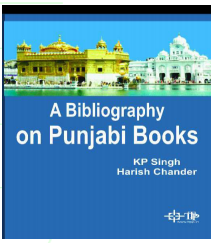


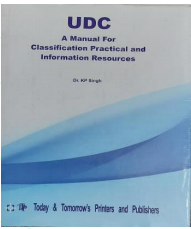
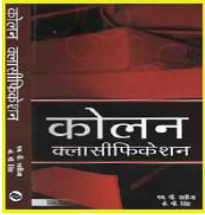
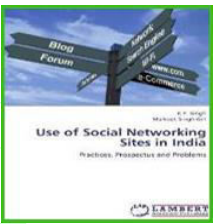
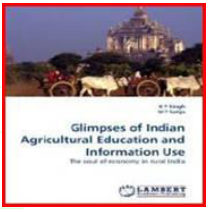
Comments